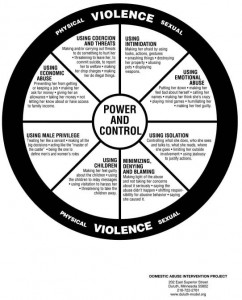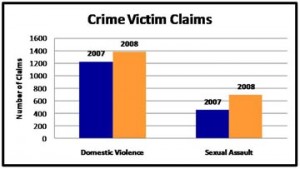The piece I choose as my best electronic form of communication was the multimodal research paper. I choose this as my best electronic form because I think I utilized other electronic resources well. Also because I made the essay into its own webpage and that was the first time I have done anything like that and I am very happy with how it turned out. If I were to make changes I would of used more hyperlinks. I would do this because it would keep the website a little more engaging and fun to use. I think this piece shows that I have the ability to be able to communicate well in the electronic mode of communication. It demonstrates that I learned how to be an effective communicator in the electronic form. One thing I did to accommodate for different audiences is for those who aren’t very tech savvy I put in a full works citied so if they couldn’t figure out the hyperlink they could look in that to find the source. I also accommodated for audiences by including the works citied so if something wasn’t clear they could go look where I found the information and maybe it would be easier to understand there. When drafting the piece I like to see an example and base some organization of off that so I looked at some of past works and made up my own combination of those for my organization. When I revise my works I rely a lot on what comments I get from my peers and my professors and then go in and make those changes. However, first I ask a family member to read through it first for grammatical errors. Now below is the multimodal research paper I wrote. I hope you enjoy it and feel free to leave any comments on it.
Awareness: The Key to Preventing Domestic Violence
By: Ryan Braun
When you hear about crime on the news or online you usually hear about murder, robberies or kidnappings. The one crime that is rarely spoken about or talked about is domestic violence. Domestic violence is a crime that happens almost everyday. It is sad because the effects it has on the victims’ lives and the children of the victim’s lives are enormous and usually nothing ever happens to the abuser. A majority of victims as well as bystanders do not report the acts committed. This is why you never hear about one of the most occurring crimes because no one ever reports it. This raises the questions, why aren’t the victims reporting the incident to the police? Are the police not good at handling these reports? Why don’t others try and stop domestic violence? Are others just not well informed to help stop it? Why do victims stay with their abuser. There are many reasons why people think that victims return to their abuser (Yamawaki, Niwako 2012). These are all things people need to figure out, in order to help the stop of domestic violence.
Background:
Google defines domestic violence as violent or aggressive behavior within the home, typically involving the violent abuse of a spouse or partner. Domestic violence is a crime that happens almost everyday and goes unheard of because it is never reported. A study done by the National Coalition Against Domestic Violence (NCADV) shows that one in every four females will experience domestic violence in her lifetime. This rate could also be higher as this is only based off the number of times it has been reported. The study also shows that 1.3 million women are victims of domestic violence by an intimate partner every year and that 85% of all domestic violence victims are women. Domestic violence can also lead to death of the victim. Another study shows that in 2007, domestic violence was the cause of 2,340 deaths in the United States alone (Halket Megan 2013). 70% of these homicide victims were females (Chanmugam, Amy 2014). If the victim does not die, they normally receive serious injuries and have mental problems as well (Howard, Louise 2010). Many victims will experience mental illnesses such as depression; withdrawal from peers and males might exhibit aggression behaviors such as fighting and bullying (Sulak, Tracey 2014). According to all these statistics, one can see that domestic violence is very bad and that it’s sad that it happens so often and hardly ever gets reported. People need to be more aware of domestic violence, learn how to help prevent it, and people need to start reporting it.

Signs of Domestic Violence, photo borrowed from http://www.domesticviolence.org/violence-wheel/
Real Stories:
One can read about things that happen to victims and viewers of domestic violence but it has no meaning because they are just things that could happen to a victim or viewer. Having some real true stories can help put in perspective the seriousness of the effects domestic violence has on victims and viewers. It actually shows how bad domestic really is and puts an actual image in your mind. The Florida Coalition Against Domestic Violence compiled a few stories from real people who are real victims of domestic violence. It helps to show how much and how seriously it affects the victims lives. Reading some of these stories will open your eyes to how serious and awful domestic violence is and will hopefully make you want to stand up and take action against domestic violence.
Prevention:
There are many ways one can either prevent this from happening to them. People have many different theories of ways to prevent or stop further abuse from a partner. The Center For Prevention Of Abuse has many things you can do to help prevent domestic abuse. The organization claims that one of the best things to do is to call the police immediately when you see or hear evidence of domestic violence and don’t hesitate to call. The organization also encourages people to speak out against domestic violence to bring awareness about domestic violence and to take personal action against domestic violence. Another thing that one can do is to encourage local neighborhood watch to watch out for signs of domestic violence and report it, if there are any signs of domestic violence. The Center For Disease Control and Prevention says that the promotion of healthy, respectful, nonviolent relationships is another good way to help prevent domestic violence. The Help Guide organization says that one way to prevent domestic violence is to leave your partner or abuser, however you have to do it correctly. Throughout all the different organizations and theories, there is one way of prevention that is universal. The universal way of prevention is to call the police at the first signs of domestic violence.

New York State Domestic Violence Dashboard Project’s graph showing the number of sexual assault and Domestic Violence incidents reported. These numbers need to be higher photo borrowed from http://www.opdv.state.ny.us/statistics/nydata/2008/pubhealth-welfr.html
Leaving Your Abuser:
Victims of domestic violence rarely call the police to report the incident or leave their partner who abuses them because they are scared that it is going to end up bad for them in the end. For it to end up bad for the victim it would require them to leave their partner in the wrong way. According to the Help Guide organization and many other organizations, there is a right and a wrong way to leave your abuser. Before you leave you should make an escape plan, for example find a time for you to leave and other things like that. The organizations say the first thing you should do when leaving your abuser is to call the police or a shelter to help get protection and a place to go. Once you have shelter and protection, you should go off the grid essentially, avoid using cordless phones, use prepaid phones, get your own cell phone if you were using the same account as your abuser, if you need to use the computer use a safe one and make sure to change all your usernames and passwords. The last thing they say to do when leaving is to not be afraid to get legal help and talk to the police.
Recap:
Domestic violence is one of the most non-reported crimes in the world. That is a significant fact since one in four females are victims of domestic violence and that is just based of the number of reports that are actually reported and organizations suggest that the rate could be a lot higher with all the non-reported incidents. When hearing about domestic violence you normally only hear of female victims which is usually true because 85% of victims are females, however males can also be victims its just more rare. The repercussions of domestic violence for the victims and the bystanders are horrific. Victims and bystanders of domestic violence suffer from mental illnesses, serious injuries, death and repeating the same actions to your future partner or children. Victims and bystanders usually develop mental illnesses such as depression, withdrawal from society and peers, anxiety issues and personality changes. Victims usually receive serious injuries and in some cases death. Domestic violence results in thousands of deaths each year. Bystanders or children who are victims of domestic violence are twice as likely to abuse their children or intimate partner when they are older. These are all terrible things that happen because of domestic violence; therefore domestic violence must be stopped or prevented. All the domestic violence organizations and help organizations say the one way that is going to prevent domestic violence the best is to call the police when you see signs of domestic violence. Other things they say to do are, to as an individual to speak out against domestic violence and take action yourself. They also encourage victims to leave their abuser and seek help through the police or shelters to get away from the violence. However you also need to leave taking the right steps in order to avoid more violence and damage. In the end it comes down to everyone to take it upon themselves to step up and take action themselves to stop and prevent further domestic violence.
Works Citied:
Halket, Megan, et al. “Stay With Or Leave The Abuser? The Effects Of Domestic Violence Victim’s Decision On Attributions Made By Young Adults.” Journal Of Family Violence 29.1 (2014): 35-49. Academic Search Premier. Web. 20 Apr. 2014.
Sulak, Tracey, Terrill Saxon, and Danielle Fearon. “Applying The Theory Of Reasoned Action To Domestic Violence Reporting Behavior: The Role Of Sex And Victimization.” Journal Of Family Violence 29.2 (2014): 165-173. Academic Search Premier. Web. 20 Apr. 2014.
Yamawaki, Niwako, et al. “Perceptions Of Domestic Violence: The Effects Of Domestic Violence Myths, Victim’S Relationship With Her Abuser, And The Decision To Return To Her Abuser.” Journal Of Interpersonal Violence27.16 (2012): 3195-3212. Academic Search Premier. Web. 20 Apr. 2014.
Howard, Louise M., Kylee Trevillion, and Roxane Agnew-Davies. “Domestic Violence And Mental Health.”International Review Of Psychiatry 22.5 (2010): 525-534. Academic Search Premier. Web. 20 Apr. 2014.
Chanmugam, Amy. “Social Work Expertise And Domestic Violence Fatality Review Teams.” Social Work 59.1 (2014): 73-80. Academic Search Premier. Web. 20 Apr. 2014.
“Intimate Partner Violence: Consequences.” Centers for Disease Control and Prevention. Centers for Disease Control and Prevention, 24 Dec. 2013. Web. 16 Apr. 2014.
“National Coalition Against Domestic Violence.” National Coalition Against Domestic Violence. N.p., n.d. Web. 16 Apr. 2014.
“Help for Abused and Battered Women.” Help for Abused & Battered Women: Domestic Violence Shelters & Support. N.p., n.d. Web. 20 Apr. 2014.
“Violence Wheel – Domestic Violence.” Violence Wheel – Domestic Violence. N.p., n.d. Web. 20 Apr. 2014.
“Office for the Prevention of Domestic Violence.” NYS OPDV. N.p., n.d. Web. 21 Apr. 2014.
“Stories of Domestic Violence.” Home. N.p., n.d. Web. 24 Apr. 2014.